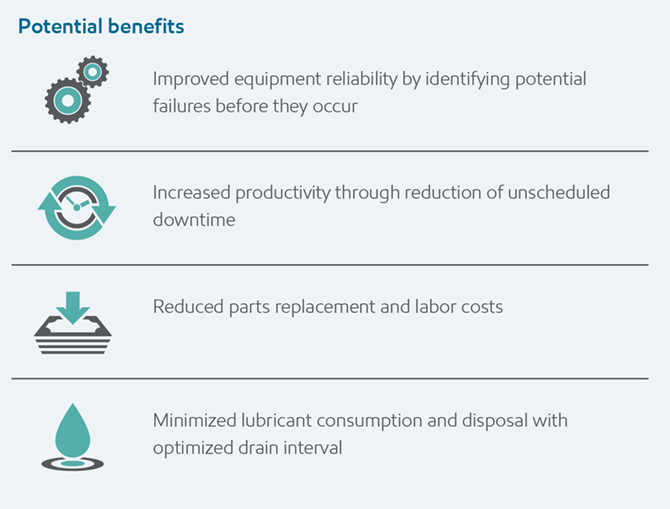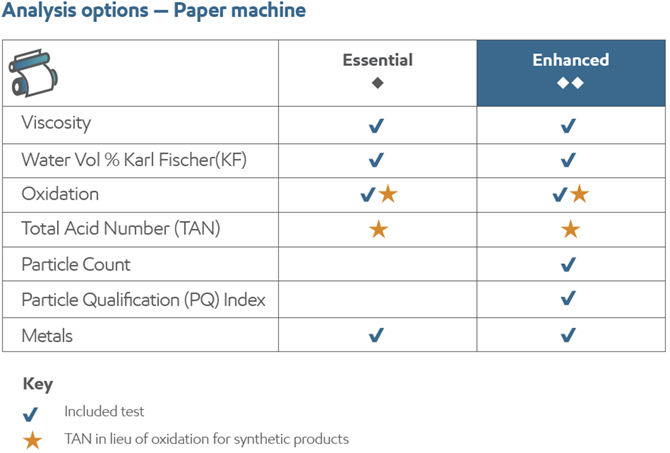Paper machine oil (PMO) analysis

This service monitors paper machine circulation oil for premature wear, contamination and oil condition
Description
This service provides necessary equipment- and lubricant-specific testing designed to help you optimize your lubrication program, as well as detect equipment problems before they cause expensive unplanned outages. Applicable equipment includes dryer bearing lubrication systems, press lubrication systems and Controlled Crown roll systems. This helps improve equipment reliability by monitoring system cleanliness and lubricant performance.


| Test | Purpose | Importance of test |
|---|---|---|
| Metals | To determine the presence and levels of metallic content in the oil, including contaminants and wear particles | The level of metals helps determine if equipment components are wearing or if harmful contamination is entering the oil. The level of metals that are part of the additive chemistry are also reported |
| Oxidation | To determine the level of lubricant oxidation and deterioration |
Oxidation can mean:
|
| Particle Count Analysis | To measure the level of particulate contaminants in the oil |
|
| Particle Qualification (PQ) Index | To determine ferrous metal fatigue failures and metal-to-metal contact not usually detectable with some spectrographic analysis |
PQ Index can detect at an early stage:
|
| Total Acid Number (TAN) | To measure acidic oil oxidation by-products | An elevated Total Acid Number may indicate increased oil acidity resulting from increased oil oxidation |
| Total Base Number (TBN) | To determine the reserve alkalinity of the oil used to neutralize the formation of acids |
A decrease in Total Base Number may be indicative of:
|
| Viscosity | To determine the oil’s resistance to flow |
|
| Water | To detect presence of water contamination | Water contamination may cause severe corrosion and subsequent wear, poor oil film thickness or hydrogen embrittlement |
